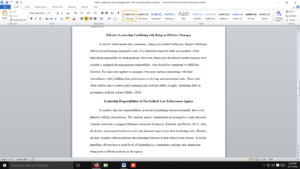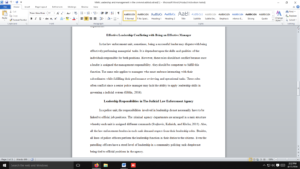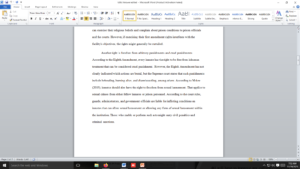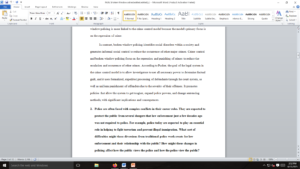Role of leadership in the criminal-justice system
One of the obstacles to defining the role of a leader is the difficulty in defining what leadership entails. Think about the role of leadership in the criminal-justice system and answer the following questions in a 2- to 3-page Microsoft Word document:
- How can you differentiate between the role of a leader and a manager in the criminal justice system with reference to the following:
- Operational functions of the organization, such as budget planning, recruitment and hiring, infrastructure maintenance, and performance reviews
- Relationship with subordinates in the organization
- Are there any overlaps between effective leadership and effective management roles in the criminal-justice system?
- Does being an effective leader in the criminal justice system conflict with being an effective manager?
- Are leadership responsibilities tied to official job descriptions in criminal justice or could a criminal justice agent of any position be a leader? Why?
- How do the different ways of interpreting and defining a leader’s role influence effective leadership? Explain with reference to the various definitions of leadership as a specialized role and a shared influence process.
Cite any sources using APA format on a separate page. Let’s learn how to cite sources using APA guidelines.
Answer preview
In judicial systems, the role of a leader and manager differ in that they utilize different strategies to meet organizational goals. Managers focus on the institution’s operational aspect by ensuring that all daily routines and activities are achieved. They are responsible for functions such as planning institutional budgets, recruitment of new staff members, and maintenance of infrastructure (Giblin, 2016). They are also involved in reviewing employee performance to make decisions such as firing or promotions. On the contrary, leaders play a critical role in developing relationships with their juniors. They interact closely with subordinates to influence their performance in the system.
[699 Words]

Role of leadership in the criminal-justice system





